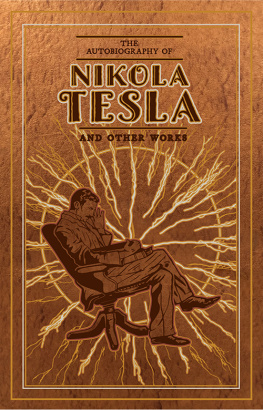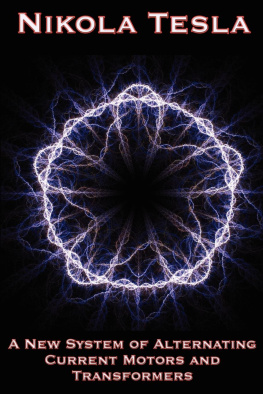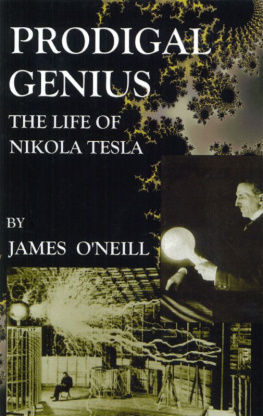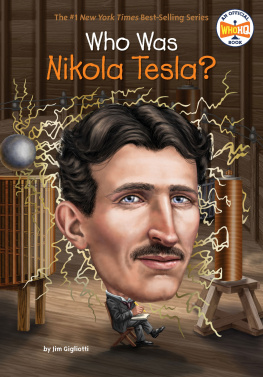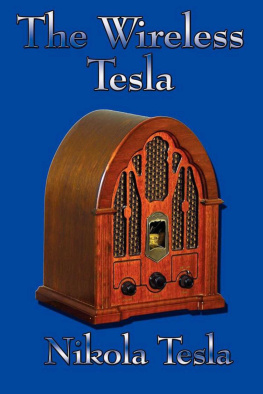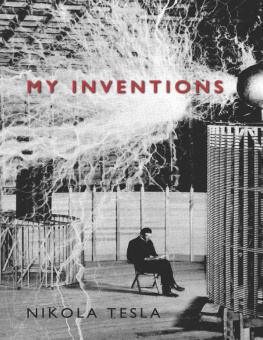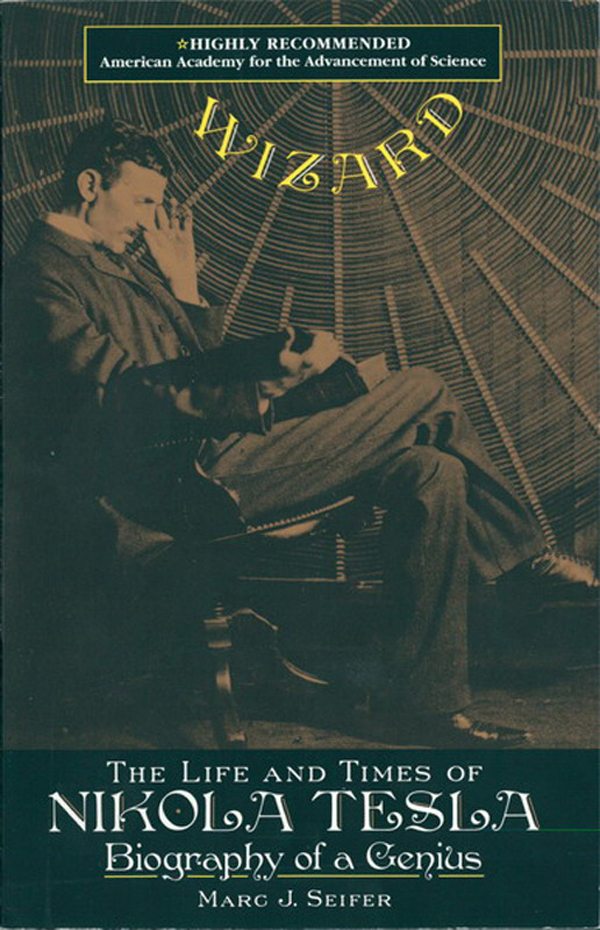
It was Seifersintention to bringTeslasmajor scientific and technological contributionstogether. He has done a very impressive job collecting a massive amount of documentation of original and secondary sourcesThe letters in the J.P. Morgan collection, in particular, shed considerable new light on Teslas connection with Morgan and his contemporaries.
Nature
The best chapter in Seifers book describes late 19th century science fiction and locates Teslas projects among other predictions of the futureSeifer is [also] good at describing Teslas lack of practical, economic and personal judgment and the way his enormous ego invited unscrupulous partners
Washington Post Book World
Seifer paints a picture of Tesla that anyone familiar with the life of someone such as Orson Welles will recognize. Here was a man who peaked early, traveled in famous companyand started believing his own press hype. That made him spend the rest of his life trying to score another universe-changing coupWizard does a pretty good job of placing Tesla within the firmament of inventors, thinkers, and futurists. With Seifers scholarship to build on, anyone reconstructing those dizzy years of invention and litigation at the turn of the century would be foolish to try and leave out Nikola Tesla.
Winston-Salem NC Journal
Despite Teslas impact on electricity, history does not regard him as highly as many of his inventive contemporariesAs Seifer shows in great detailTeslas story is complicated and tests our definition of scienceWhere does someone like Tesla fit it?
MITs Technology Review
Wizardpresents a much more accuratepicture of Tesla[It] is thorough, informative, entertaining and a valuable addition to electrotechnological history, past and future.
Electronic Engineering Times
Here is a deep and comprehensive biography of a great engineer of early electrical science. Indeed, it is likely to become the definitive biography of the Serbian-American inventor Nikola Tesla. The book brings together, into a cohesive whole, the many complex facets of the personal and technical life of the wizard who stands alongside Thomas Edison and George Westinghouse as another great implementor and inventorHighly recommended.
American Academy for the Advancement of Science
In modern times, Tesla may be enjoying a comeback thanks to books like Wizard.
New York Times
The next time you dial your cellular phone, theres a guy you should think of. If you dont use a cell phone, then look at the light by which youre reading this newspaper. He helped make it brighterWIZARD chronicles Teslas contributions to alternating current, or AC, the electrical system used in most homes today. Though today he is almost forgotten, written out of history by the people he once worked for, Tesla lived in New Yorks Waldorf Astoria and was world famousHis notebooks are filled with mathematics, said Seifer. He predates Einstein and Bohr with his description of the atom. He was one of the forefathers of quantum physics.
Narragansett Times
[Wizard] brings the many complex facets of [Teslas] personal and technical life together into a cohesive wholeThe book contains excellent discussions of the controversies, fury of activity, and lawsuits surrounding the development of new hardware technology. In many ways, they are similar to the later legal battles in the development of computersI highly recommend this biography of a great technologist. A.A. Mullin, U.S. Army Space and Strategic Defense Command.
Computing Reviews
Rare insight on a great mind.
New Bedford Standard Times
In memory of my Dad, Stanley Seifer
Nikola Tesla was my fathers uncle, and as such he was treated by our family much as any uncle might have been who lived at a considerable distance and was advanced in years. But there were stronger bonds between my father and Tesla than might otherwise have been the case. They came from identical social backgrounds, sons of Serbian Orthodox priests, born and raised a few miles apart in the Austro-Hungarian military frontier district county of Lika in the Province of Croatia (my grandmother was Teslas sister Angelina); they were the only members of a relatively limited extended family to emigrate to America; and they were the only members to undertake science and technology as their lifes work.
My father, Nicholas J. (John) Terbo (Nikola Jovo Trbojevich), was thirty years younger than his uncle, came to America thirty years after him, and died thirty years after Tesla. Tesla was already famous as my father was growing up, and he became a model for my fathers technical career. Father held about 175 U.S. and foreign patents, the most important of which was his 1923 basic patent on the Hypoid gear, used on the vast majority of the worlds cars since 1930. The Hypoid gear introduced advanced mathematics to the art of gear design, much as Teslas work united electrical theory and electrical engineering. Tesla henceforth proudly referred to my father as my nephew, the mathematician. (That these patents brought considerable financial as well as professional recognition to my father was also not lost on the often cash-poor Tesla.)
Because the ethnic and professional similarities between Nikola Tesla and my father were so striking, I feel that I have been granted a special privilege through this comparison in understanding Teslas private personality, including his well-developed sense of humor and his often cavalier disregard for money. Once, when Tesla was visiting us in the early 1930s, my father took him to lunch at the Book Cadillac Hotel, then the finest in Detroit. They arrived late, only a few minutes before a cover charge of $2 or $3 would end. (This was equivalent to $20 or $30 by todays standards.) My father suggested waiting, but Tesla would hear none of it. They sat down amid a flurry of waiters and Tesla ordered a chafing dish, bread, and milk and proceeded to prepare his own lunch to his own specifications (to my fathers amusement and the unease of the matre d).
I had not yet reached thirteen when Tesla died in January 1943, and I did not have the sense of the ending of an epoch marked by his passing, both for our family and for an era of individualism in scientific discovery.
I may have reflected with some uneasiness that I had had the opportunity to meet Tesla some three or four years earlier and that no further meetings would ever happen again. I remembered my reluctance to be dragged to the meeting in his suite at the Hotel New Yorker when my mother and I were spending a few days in New York before returning to Detroit after our summer vacation at the Jersey shore. (I would have preferred spending more time at Radio City Music Hall or at the docks, watching the ocean liners.)
I was shy (rather, overwhelmed) and spoke hardly a word to this very tall, very gaunt old man. I would have been repelledas any young all-American boy should have beento be hugged and kissed by this stranger if my father hadnt often done the same. (This is the way my mothers women friends often acted, but my American mothers brother would have only given me a firm handshake.) Little did I realize that Teslas hugging, kissing, and patting my head would belie his famous idiosyncrasy of an overriding phobia of germs. Surely, a young boy would have been teeming with germs! One could therefore speculate that this idiosyncrasy was possibly an affectation designed to preserve his space.
While Tesla lived, some considerable degree of his fame enduredin no small measure because of his ability to stimulate the media. However, after his death the nation and the world were occupied with other more pressing matterswar and reconstruction, international political realignments, an unmatched explosion of new technology, a new consumer societyand Teslas fame and recognition nearly evaporated. Only a few in the U.S. and international scientific communities and the abiding respect and admiration of Serbs and all Yugoslavs worldwide kept his name alive.
Next page


